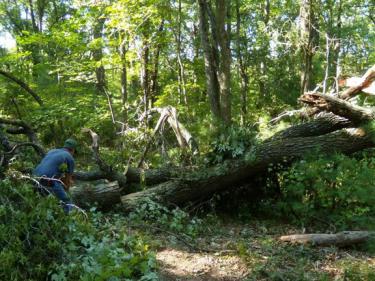What you can do to prevent hurricane damage to your forest
It’s impossible to reduce the risk of a hurricane, but it is possible to decrease your forest’s vulnerability. In fact, doing so is more important than ever: Consider the fact that the last decade has seen some of the most active hurricane seasons on record, a trend that climatologists expect will last for 10 to 40 years. Many climatologists also believe hurricanes have become more intense today than in the past because of global warming, and that this shift is likely to continue as temperatures rise.
Fortunately, our coastal ecosystems are well adapted to hurricanes, and smart stewardship can help make them even more resilient. Here are some ways to reduce the risk of storm damage to your forest:
- Cultivate tree species that are more resistant to hurricane damage. For example, researchers have found that in Gulf coastal forests longleaf pines (Pinus palustris) are less susceptible to damage—including high winds and southern pine beetle infestation—than loblolly (Pinus taeda) or slash pines (Pinus elliottii). Other native species, including bald cypress (Taxodium distichum) and live oak (Quercus virginiana) are also relatively well adapted to high winds, and tend to resist breakage.
Longleaf pine is an interesting case study. It once covered more than 90 million acres of land in the southeast, but today the longleaf’s range has fallen to fewer than three percent of its original extent. It has largely been replaced by the faster-growing loblolly pine. Re-establishing this once dominant species is part of a long-term preventative strategy to limit storm damage to southeastern forests. It is also the centerpiece of a climate change adaptation plan in the region. Resources to support longleaf restoration may be available to you, so contact your local forest service. - Manage stand structure. Controlling the spacing between trees, as well as tree height, can also reduce the risk of damage from a hurricane. A professional forester can advise you on harvesting and thinning your forest to optimize stand structure.
How can I get more tips?
It’s simple! Enter your email below.

